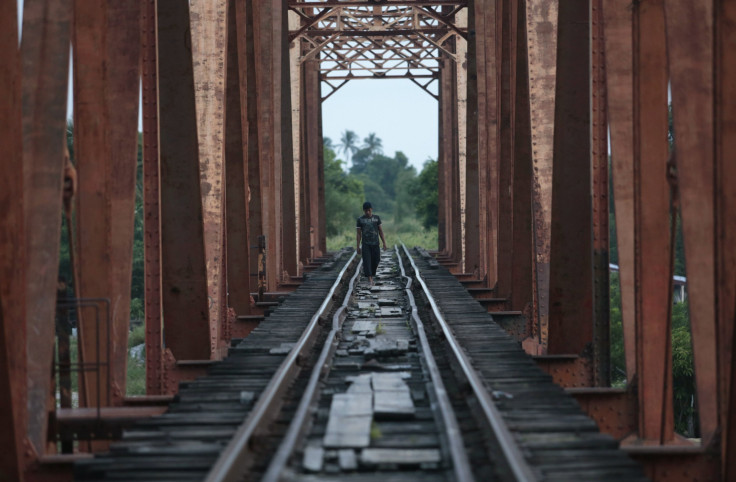Central American Migrant Crisis: US Could See Another Border Surge This Year

The migration crisis that overwhelmed the southwestern U.S. border last summer hasn’t ended: Violence and poverty in Central America are still propelling children and families north, and even though the number of migrants crossing into the U.S. has dropped from last year’s peak, it could be on track to be the second-highest on record.
That’s according to figures published this month by the Customs and Border Protection agency detailing recent apprehensions of unaccompanied migrant children and families near the southwestern border. The number of unaccompanied children caught by the Border Patrol fell by 39 percent over the past four months compared with the year before, while the number of family units apprehended fell by 16 percent, according to the statistics.
If the trend continues, the U.S. could see around 40,000 unaccompanied migrant children and 56,000 family units crossing the border this year, according to early projections by the Washington Office on Latin America. That’s below last year’s record highs – Border Patrol agents apprehended 68,631 children and 68,445 family units in fiscal year 2014 – but still higher than any other year on record.
The so-called border surge has been on the decline since August, with numbers falling below 2013 figures. But unauthorized migration flows into the U.S. have historically dipped during the winter months, and U.S. officials repeatedly have warned that the numbers could swell again in the spring and summer. The federal government has been bracing for another migration influx this year by beefing up southwest border security, fast-tracking court hearings for recently arrived migrants and expanding family detention centers. The administration also launched a new in-country program this month to screen refugees in Honduras, Guatemala and El Salvador before they make the dangerous trek to the United States -- a move that could potentially stem the migration numbers in the coming months.
Those measures don’t tackle the violent conditions behind Central American migration. For that, the Obama administration carved out $1 billion of its 2015 budget to bolster community policing, promote trade, fund job placement programs for youth and improve governance. That’s nearly three times the amount the U.S. government has supplied the region in the past.
Vice President Joe Biden made his case for the foreign aid plan in a January New York Times op-ed piece, saying U.S. assistance and political will could, over time, help make Central America the “next great success story of the Western Hemisphere.” The New York Times editorial board followed up with its own endorsement. But some lawmakers, including Democrats, have spoken out against the funding measures, saying the U.S.’ previous foreign aid programs in Central America haven’t helped.
“We’ve spent billions of dollars there over two decades,” said Vermont Sen. Patrick Leahy in Tuesday’s hearing on the State Department budget, according to the Los Angeles Times. “And we’ve seen conditions get worse in Honduras, Guatemala, El Salvador.”
It remains to be seen if the U.S. aid program will bear much fruit, but for now, there are no signs that the Central American migration crisis is waning. The U.S. may see a drop in border crossings, but part of that also is due to the fact that many migrants are simply not making it that far. Under Mexico’s Southern Border Plan, launched last summer, officials have been amplifying security at border checkpoints and targeting transportation routes that migrants had been using to make the trip north to the U.S., including the infamous “La Bestia” (The Beast) train line. This aggressive security plan contributed to more than 104,000 deportations of Central Americans from January-November 2014, a 53.3 percent increase from the year before.
© Copyright IBTimes 2024. All rights reserved.






















